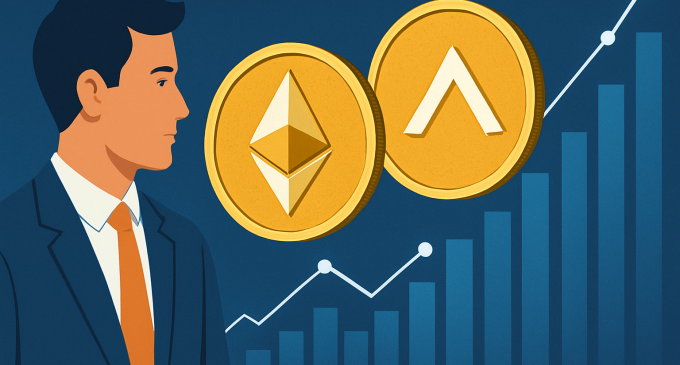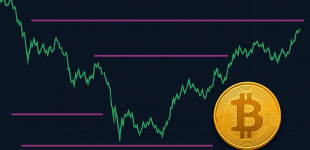
Introduction
Cryptocurrency history is dotted with stories of early adopters reaping massive rewards, and none is more iconic than those who got in during the Ethereum ICO in 2015. Valued at just $0.31 per ETH back then, Ethereum revolutionized the blockchain space by introducing smart contracts and paving the way for decentralized finance, or DeFi. Fast forward a decade, and one such Ethereum ICO investor, who held onto their position through the most volatile crypto winters and euphoric bull runs, is now making waves by endorsing a new altcoin.
This investor, whose journey mirrors the evolution of decentralized networks, is now backing a blockchain project that promises faster throughput, improved scalability, and a developer-friendly ecosystem. As the broader crypto market begins showing signs of a new cycle, this strategic bet has captured attention across both retail and institutional corners. But what exactly is this new altcoin? Why is it attracting such influential support? And could it replicate Ethereum’s historic rise?
Ethereum ICO And Its Early Believers
To appreciate the significance of this endorsement, it’s essential to understand the Ethereum ICO and what it meant for blockchain development. Launched in July 2015, Ethereum was designed to be more than just a digital currency. Vitalik Buterin’s vision was to create a global, decentralized platform that could execute code securely on the blockchain. This was the dawn of smart contracts—self-executing pieces of code that could replace centralized intermediaries in finance, law, and countless other industries.
The ICO offered ETH tokens for just $0.31 each. While the concept was novel, it was not without skepticism. Many questioned the need for another blockchain platform, especially one as ambitious and complex as Ethereum. But early adopters—developers, cryptographers, and tech visionaries—saw the enormous potential and invested with long-term conviction.
These early holders experienced tremendous gains as Ethereum exploded to over $4,000 in 2021, creating some of the most successful crypto portfolios in history. But it wasn’t just a financial victory; it was validation of a technological shift.
The Profile Of The Investor And His ETH Journey
Among those who participated in Ethereum’s ICO was an investor who has maintained a low profile yet wielded considerable influence within the developer community. Over the years, this investor remained active in Ethereum’s open-source ecosystem and DeFi protocols, often contributing to beta-testing and auditing smart contracts for flagship projects.
This investor is widely respected for his disciplined approach—refusing to sell during sharp drawdowns, choosing instead to reallocate into promising projects during bear markets. His long ETH position became legendary in select crypto circles, not merely for its valuation, but for the strategic insights he developed from watching Layer 1 ecosystems evolve over a decade.
Now, after nearly 10 years of holding Ethereum, this same investor has publicly declared a sizable position in a new altcoin, calling it the “next big wave” in smart contract infrastructure and decentralized finance.
The Altcoin In Focus: Faster, Smarter And More Scalable
While the article in question does not name the token explicitly, it details several of its standout features, which analysts believe point to a specific new-generation Layer 1 blockchain. Key innovations include:
Sub-Second Finality: Unlike Ethereum’s average 15-second block time, this blockchain finalizes transactions in under one second, eliminating latency in DeFi and NFT applications.
Modular Architecture: The chain separates execution, consensus, and data availability, allowing developers to customize chain layers based on specific use cases.
Gasless Transactions for dApps: Developers can sponsor user gas fees, removing a major adoption hurdle in onboarding new users unfamiliar with blockchain mechanics.
High Throughput: The network is capable of handling over 100,000 transactions per second, without compromising decentralization—a breakthrough enabled by advanced consensus protocols.
EVM Compatibility with Enhancements: Developers can port existing Ethereum smart contracts but also access new SDKs for advanced computation-heavy apps.
This is not just another Ethereum clone. It’s a rethink of blockchain fundamentals, optimized for the next wave of DeFi, real-world asset tokenization, and gaming.
Why The Ethereum Whale Is Bullish: A Strategic Breakdown?
The investor’s belief in this project stems from key metrics and principles gained through years of blockchain observation. Let’s break them down:
Developer Traction and Open-Source Community
As seen with Ethereum, long-term success hinges on an engaged and prolific developer base. This new altcoin has seen a 400 percent YoY increase in GitHub commits, a healthy sign of ongoing development and iteration. Moreover, several ex-Ethereum contributors are now participating in core design discussions on this project.
Capital Efficiency and Incentive Design
The tokenomics mirror the success of models like Aave and Curve—emphasizing real yield, staking rewards based on participation, and slashing penalties for malicious behavior. This helps align incentives without inflating supply unsustainably.
Institutional Partnerships
The blockchain has already inked partnerships with two major payment gateways and is piloting a DeFi infrastructure layer with one of Europe’s leading fintech banks. Such alliances often signal real-world integration potential and help de-risk early-stage investments.
Ethereum Vs. The New Altcoin: A Comparative Perspective
Ethereum laid the foundation—but it also inherited limitations. Gas fees often spike during congestion, and Layer 2 solutions, while helpful, introduce complexity for end-users. The new altcoin seeks to offer Layer 1-level scalability without the need for off-chain solutions, bridging the gap between performance and decentralization.
Some key differences include:
Consensus: Ethereum’s PoS model is robust but relatively slow; the new altcoin uses a novel proof-of-efficiency system, achieving faster consensus with fewer validators.
Smart Contract Language: Solidity vs. a more optimized language supporting parallel execution and dynamic resource allocation.
Interoperability: The new chain is natively interoperable with Cosmos, Polkadot, and Ethereum, reducing siloed liquidity.
The Ecosystem: Not Just Hype But Real Usage
With over 80 dApps already launched and a mainnet less than a year old, this blockchain shows early signs of product-market fit. Flagship applications include:
- A decentralized derivatives exchange supporting under-collateralized trading.
- A real-world asset (RWA) tokenization platform offering tokenized property and art.
- A modular NFT infrastructure allowing creators to dynamically change metadata post-launch.
Such diverse use cases increase the network’s Total Value Locked (TVL) and transactional volume—critical indicators of real adoption.
DeFi 2.0 And The Altcoin’s Unique Fit
The next evolution in DeFi requires a platform that can support complex financial logic, fast execution, and seamless UX. Whether it’s dynamic interest rate swaps or decentralized insurance contracts, the altcoin’s advanced scripting layer allows for deeply customizable smart contracts.
Moreover, projects building on this platform are integrating with off-chain oracles, enabling real-time, data-driven DeFi products that respond to global financial events.
Price Projections And Potential Risks
Market analysts estimate a 10x to 25x upside for this token during the next bullish cycle, contingent on continued adoption, developer growth, and macroeconomic stability in crypto.
However, the risks cannot be overlooked:
Regulatory Overhang: Global scrutiny on crypto assets remains a concern, particularly for chains with token incentive structures.
Competition: Other Ethereum killers are not standing still; projects like Solana, Avalanche, and Sui are also innovating.
Security Audits: As the altcoin scales, rigorous stress testing and formal audits will be critical in avoiding major vulnerabilities.
Conclusion
In the volatile world of cryptocurrencies, seasoned insights often matter more than speculative noise. When an Ethereum ICO investor who has withstood the rollercoaster of the last decade makes a concentrated bet, it signals more than just hope—it’s a strategic move backed by experience and deep technical understanding.
This new altcoin may or may not reach Ethereum’s level of ubiquity. But with superior speed, modular architecture, developer momentum, and real-world applications, it certainly has the ingredients of the next blockchain breakthrough.
For investors looking to diversify beyond the crypto blue chips, this could be the rare asymmetric opportunity where fundamentals, technology, and timing align.







There are no comments at the moment, do you want to add one?
Write a comment